In ancient times, the style of Chinese buildings inspired the architecture of the Oriental nations.
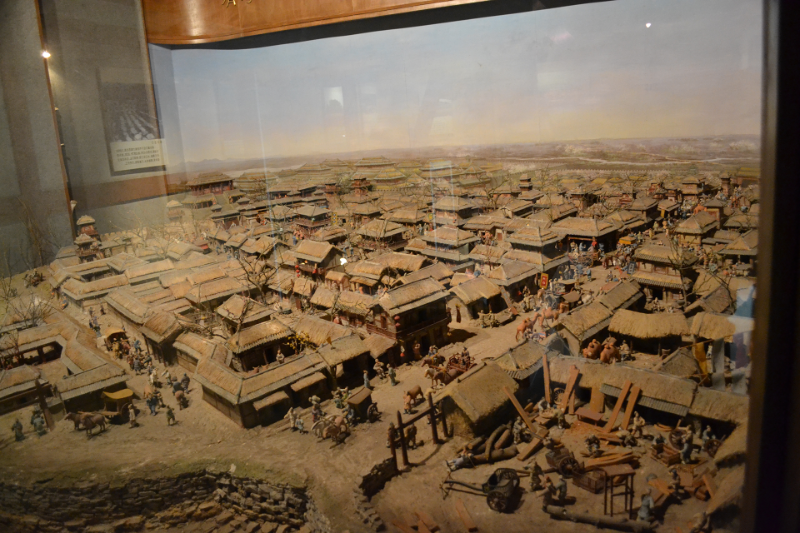
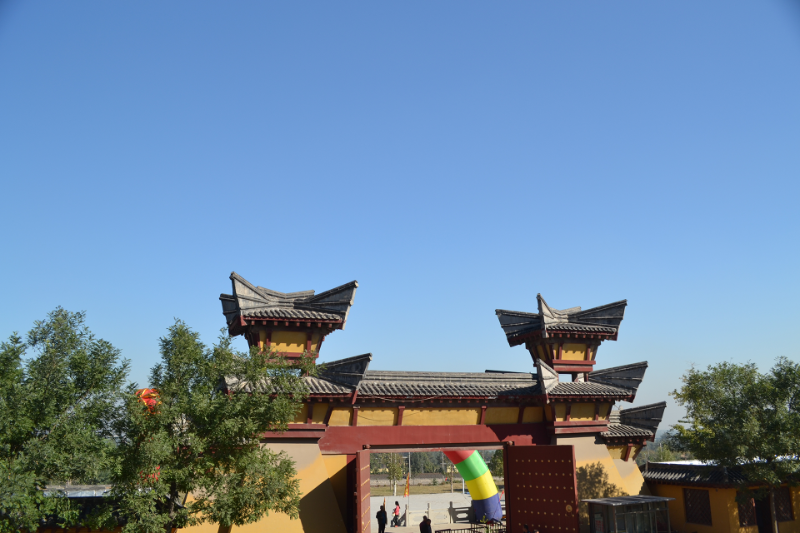
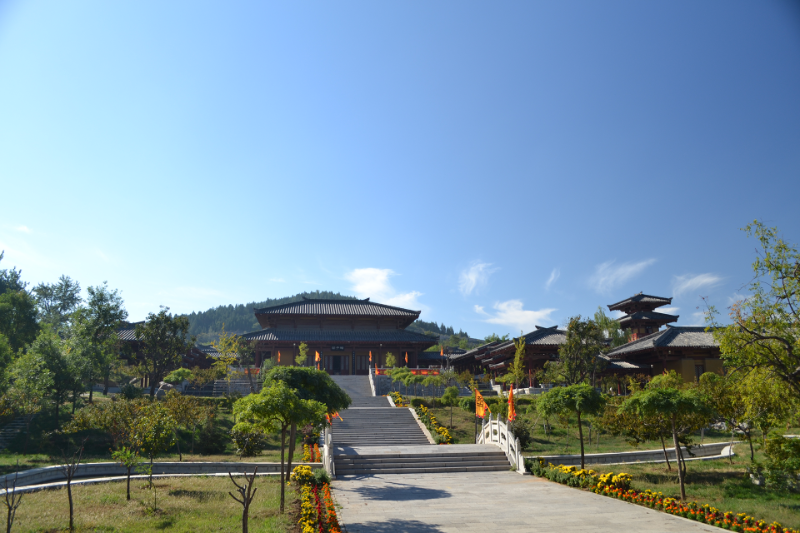
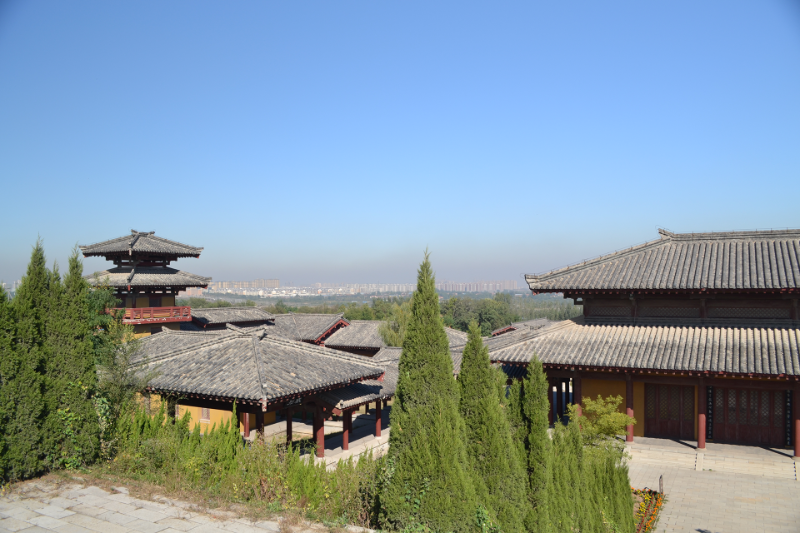
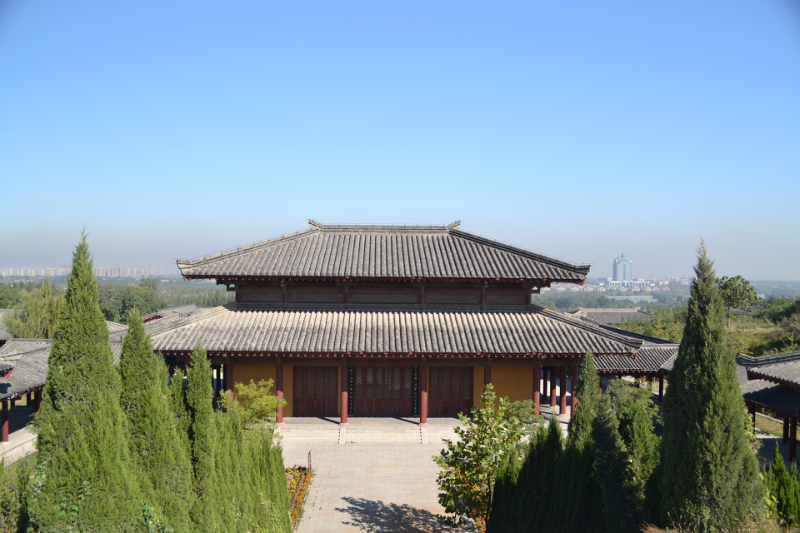
The first picture was taken in the Museum of the Historic Site of the Qi State’s Capital (齐国故城遗址博物馆). The city model shows an imaginary cityscape of Linzi (临淄), the capital of the Qi (齐) State.
The following five pictures were taken in the Memorial Museum of Guan Zhong (管仲纪念馆). In the sixth picture, the model shows the imaginary life in Linzi.
Guan Zhong was a great statesman of the Qi State in the early days of the Spring-Autumn Period. He had a famous word, “The people of Rong (戎) and Di(狄) are as jackals and wolves, and they are never contented. All states of Huaxia are intimate, and everyone should not be deserted. It is like the bird Zhen (鸩)’s poison to seek momentary ease with no thought of the future, and this mind should not be kept.” The words of Guan Zhong showed strong ethnic consciousness, which was called “the Great Principle of Spring-Autumn” (春秋大义). Guan Zhong was the prime minister of Qi Huan-Gong (齐桓公). He put intelligentsia (士), farmers, craftsmen and merchants in the same important positions. Since the times of Jiang Taigong (姜太公) who was the creator of the Qi State, the Qi State had been famed for valuing talented people. The Qi State showed some qualities of humanism and mercantilism. In the times of Qi Huan-Gong, Qi State upheld the principle of respecting the kings of the Zhou Dynasty and repelling the invasions of other peoples (尊王攘夷), and the troops of Qi brought peace and safety to all the Huaxia States. Confucius said, “If there wasn’t Guan Zhong, I would be forced to fall my hair down and wear the clothing of other peoples.”
The architectural style shown by the pictures existed from the Zhou Dynasty to the Han Dynasty.
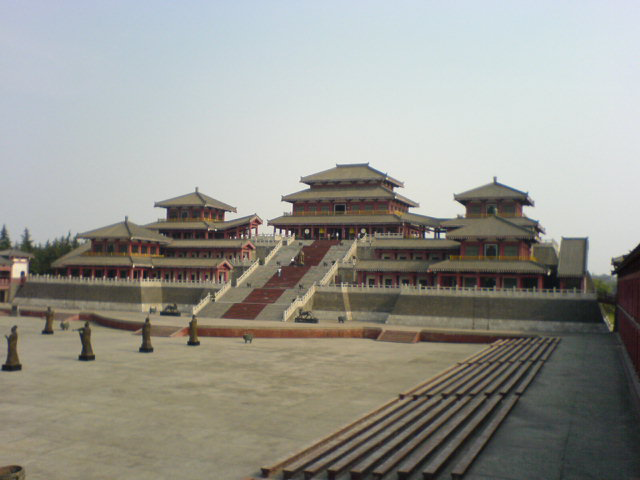
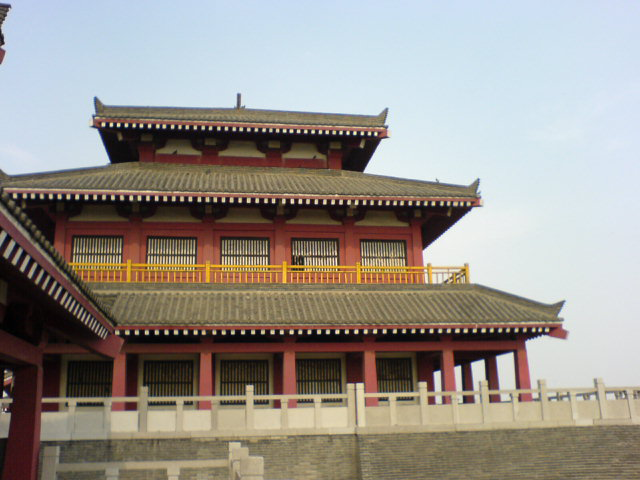
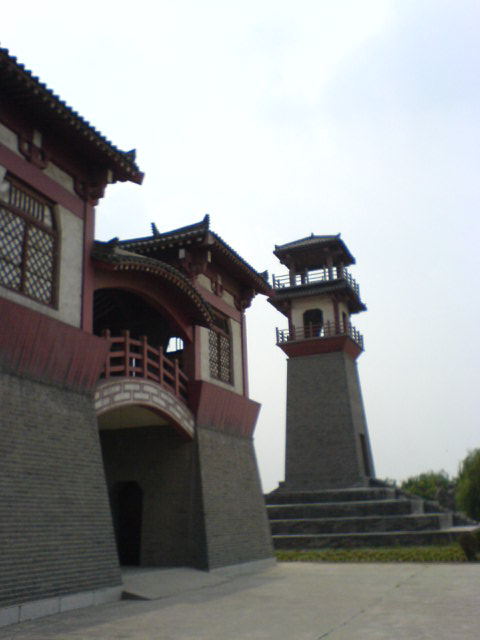
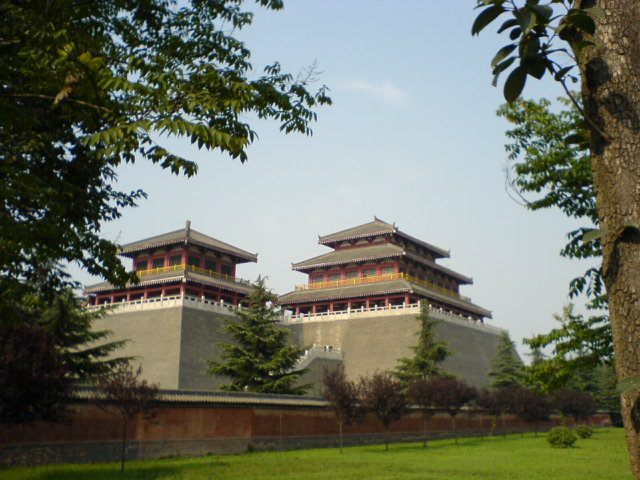
The four pictures were taken in the Park of the Epang Palace (阿房宫). The park was located in Xi’an and pulled down in 2013.
The Epang Palace was burnt by a conflagration of the war against the Qin Dynasty. The First Emperor of Qin forced several hundred thousand people to build the Epang Palace. And the palace’s buildings spread from the west of modern-day Xi’an to the imperial palace of Xianyang (咸阳). In the Epang Palace, there were countless treasures and beautiful women which were captured from the six states of the east. In the last days of the Qin Dynasty, the last king named Ziying (子婴) surrendered to Liu Bang (刘邦) who later built the Han Dynasty. Liu Bang entered the Epang Palace, and actually he was fascinated by the beautiful women in the palace. Two ministers Fan Kuai (樊哙) and Zhang Liang (张良) warned him that luxury caused the downfall of the Qin Dynasty. Liu Bang was awakened. He sealed the Epang Palace off. Later, Xiang Yu (项羽) who was a great general of the Chu (楚) State arrived in Xianyang. He also entered the Epang Palace. When he saw the beautiful women and the treasures, he remembered the doom of his motherland, the tragic history of blood and tears. For revenge, he ordered his troops to burn the Epang Palace.
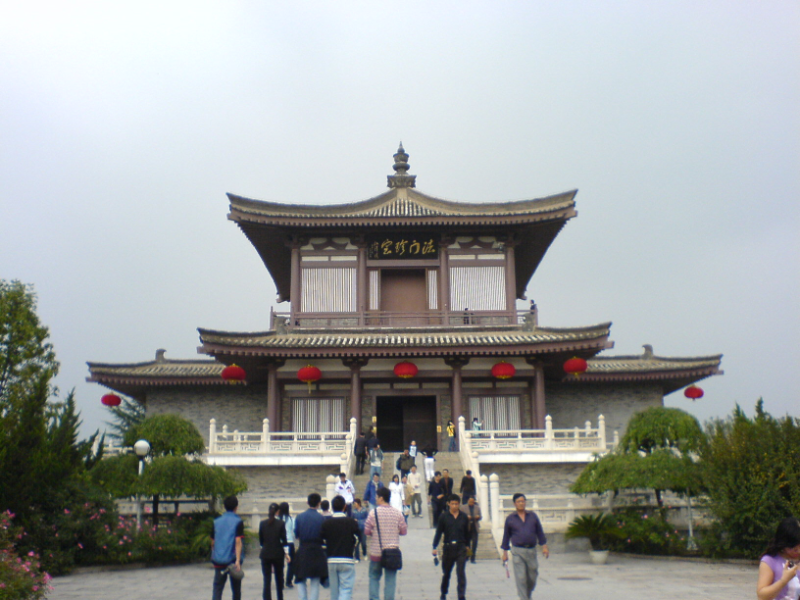
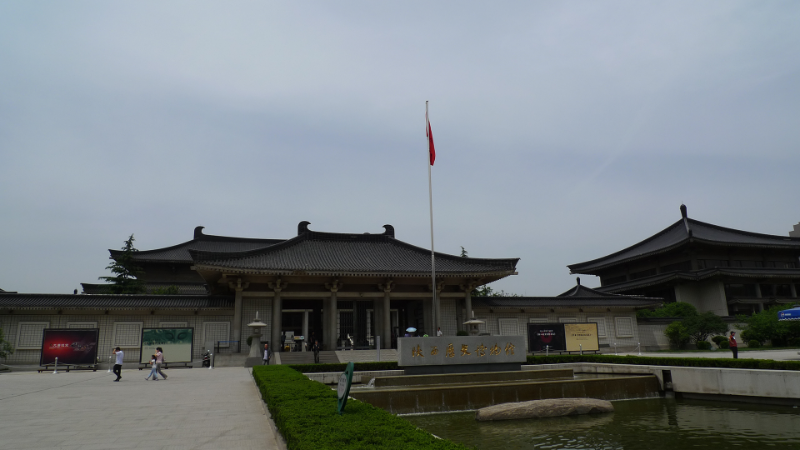
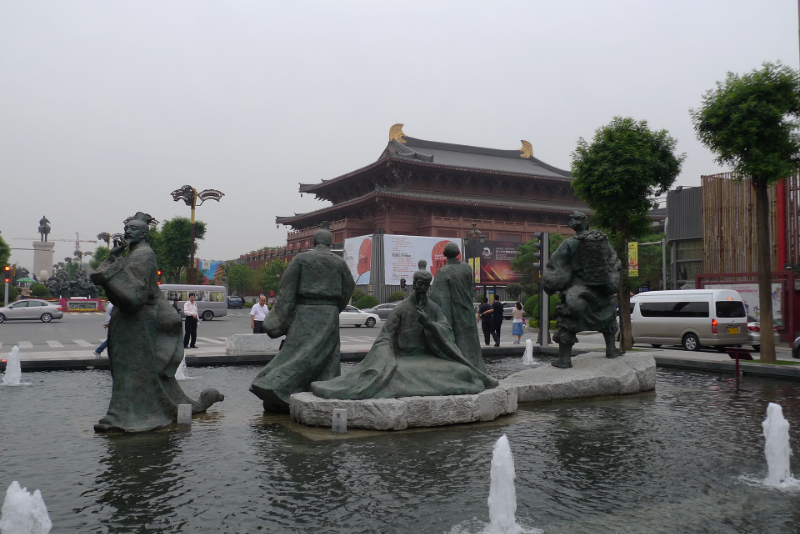
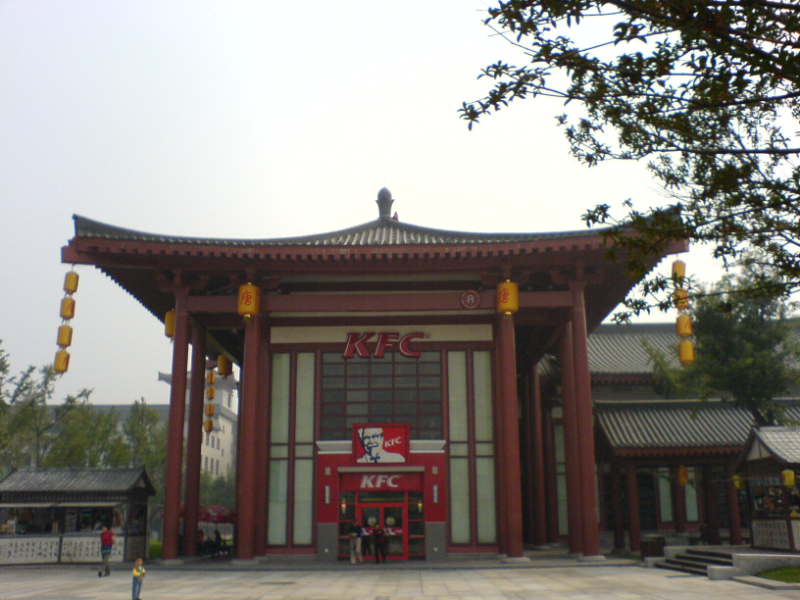
The first picture was taken in the Famen Temple (法门寺). In the Tang Dynasty, emperors visited the Famen Temple for showing their piety to the relic of Buddha. Since the 1980s, the reconstruction of the temple’s buildings has mainly followed the architectural style of the Tang Dynasty. The building in the picture is the museum of the temple.
The second picture shows the appearance of Shaanxi Historical Museum. The museum collects a large number of precious cultural relics, especially the relics of the Western Zhou, the Western Han and Tang Dynasties, because Xi’an was the capital of the three dynasties.
The last two pictures were taken in the fountain square of the Big Wild-Goose Pagoda (大雁塔). Though Xi’an was the capital of several dynasties, the city tries to show the architectural style of the Tang Dynasty. The Tang Dynasty is thought to be the most splendid empire in the history of China. Its name has been a cultural symbol of Chinese people, so that some overseas places where Chinese immigrants live are called “Streets of the Tang People” in modern times. Xi’an is very proud of its splendid history. In the city, there are a lot of commercial buildings that follow the architectural style of the Tang Dynasty. In the fourth picture, you can see a KFC restaurant, so you may understand why KFC is always successful for localization.
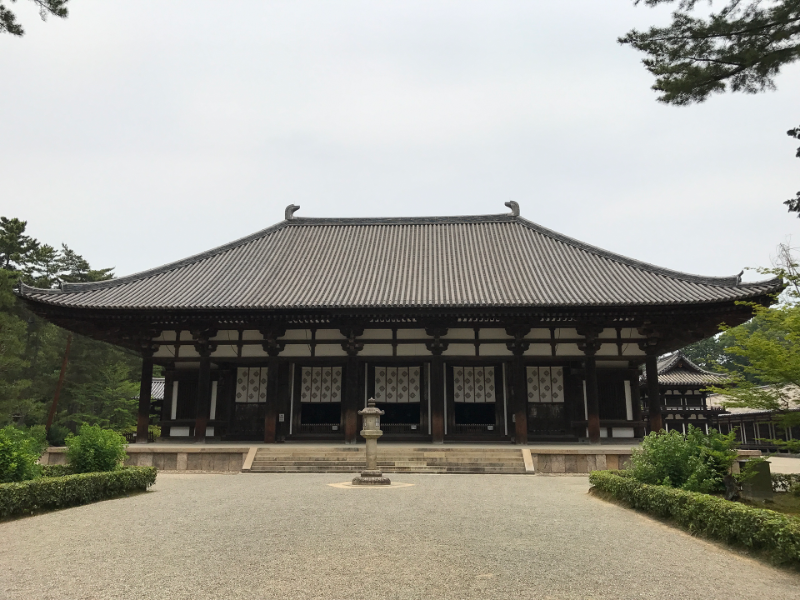
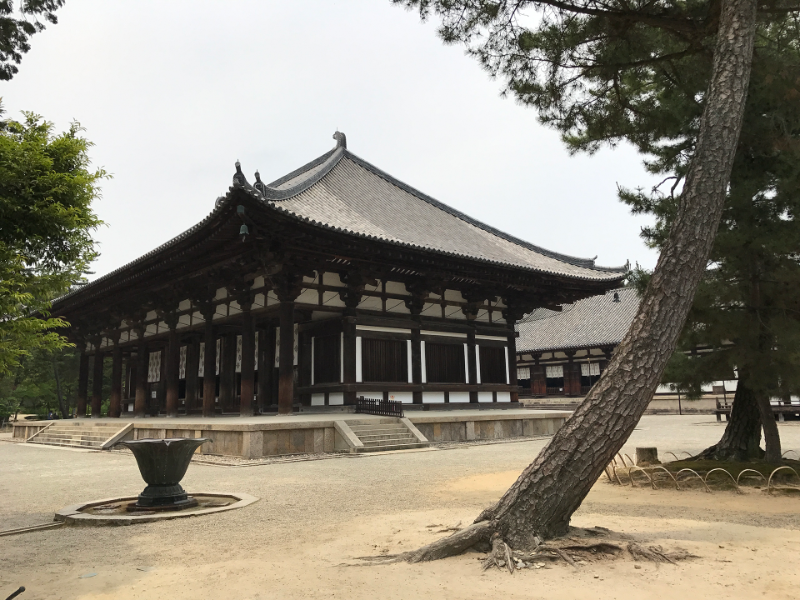
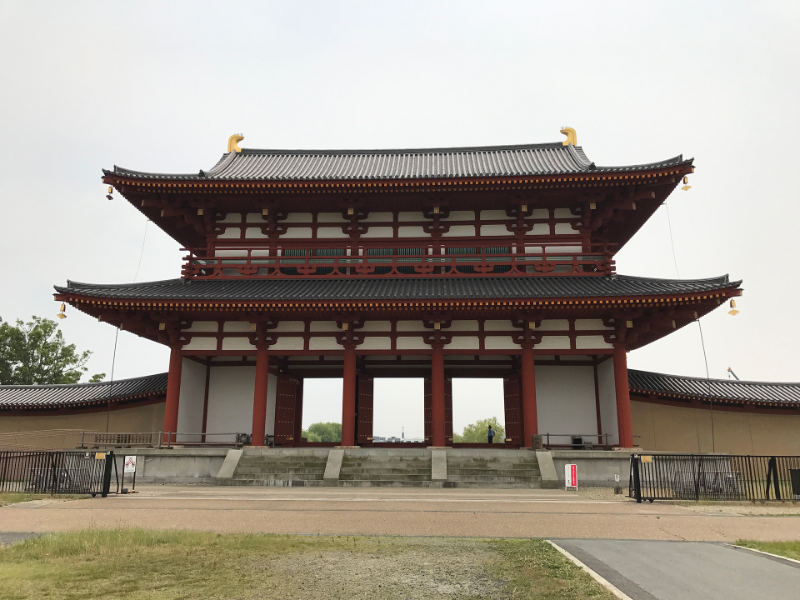
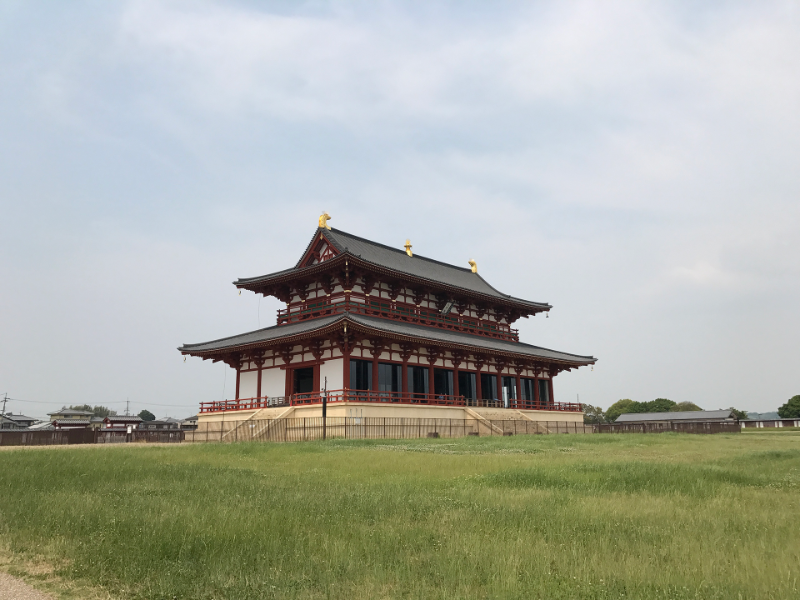
The pictures were taken in Nara, Japan. Nara was the capital of Japan in the eighth century. During the period, a lot of Japanese envoys and students visited the Tang Dynasty. They imported culture and technology from China. At that time, the localization of Chinese culture was not evident yet. Therefore, we can learn the architectural style of the Tang Dynasty from the buildings of the Nara Period.
The first two pictures were taken in Toshodai Temple (唐招提寺). Because of careful maintenance for 1200 years, the temple still keeps its original style. Toshodai Temple was designed by a Chinese monk named Jianzhen (鉴真). Because of unexpected conditions, Jianzhen arrived in Japan after his efforts in eleven years. He was an important character who introduced the cultural and technological achievements of China to Japan.
In the third picture, the building is the reconstructed Suzaku Gate (朱雀門) of Nara. And in the fourth picture, the building is the reconstructed Great Audience Hall (大極殿) of Nara. Ancient architectural technology was used during the reconstruction of the buildings.
There was a well-known Japanese envoy named Abe no Nakamaro (阿倍仲麻呂). He was sent to China at the age of 19, and later became an official in China. Abe no Nakamaro had two good friends, Li Bai (李白) and Wang Wei (王维), who were two eminent poets. Their friendship was shown in their poems.
Since the Han Dynasty of China, Japanese monarchs regularly sent envoys to offer tribute to the emperors of China and then got titles. In the Sui Dynasty of China, Japan started to want an equal relationship with China. Shotoku Taishi sent diplomatic missions to China four times (in AD 600, AD 607, AD 608 and AD 614), and established a series of complete systems according to the systems of China. In AD 630, Japan first sent a diplomatic mission to the Tang Empire. From AD 702 to 752, the relationship of China and Japan was in its golden years. In 755, An Lushan (安禄山), who was from a foreign family and became a general of the Tang, suddenly rebelled against the empire. China fell into the swirl of wars. The relationship of China and Japan was damaged seriously. In AD 838, the largest Japanese diplomatic mission which had 651 members arrived in China. In AD 894, Sugawara no Michizane (菅原道真) persuaded the monarch of Japan to stop sending diplomatic missions to China. Accordingly, the localization of Chinese culture and the development of Japanese culture had been more important for Japanese people.
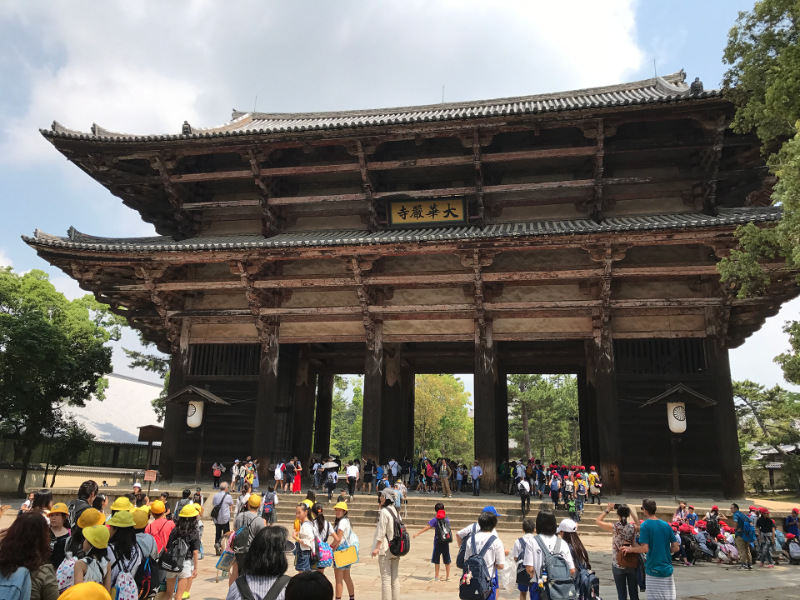
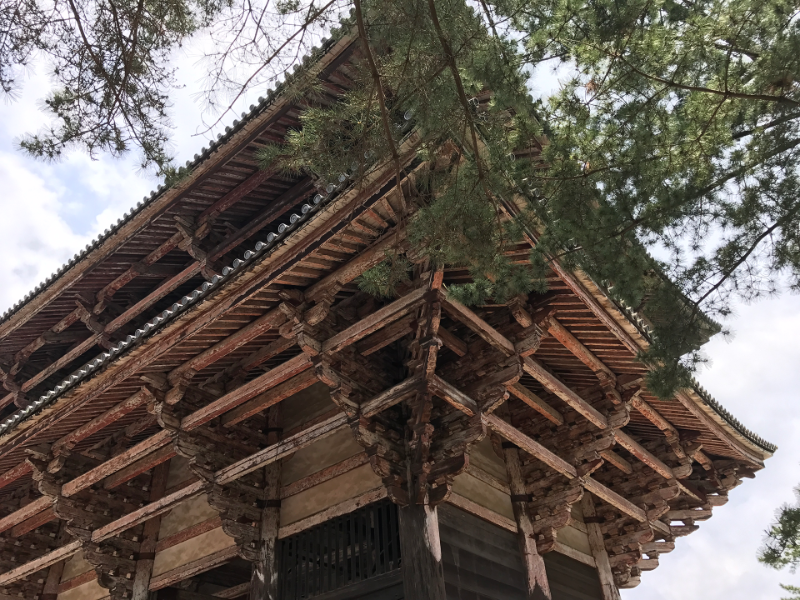
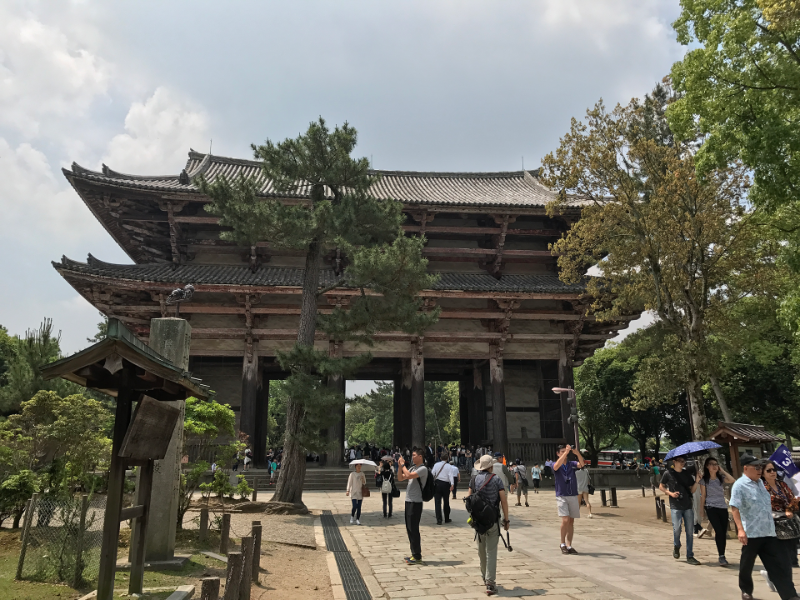
The pictures were taken in Nara, Japan. The building is the Great South Gate of Todai Temple (東大寺). It was built from 1199 to 1203 with the architectural technology imported from the Southern Song Dynasty. In contrast with other buildings reconstructed in the temple, we may find the architectural style of the Song Dynasty from the Great South Gate.
